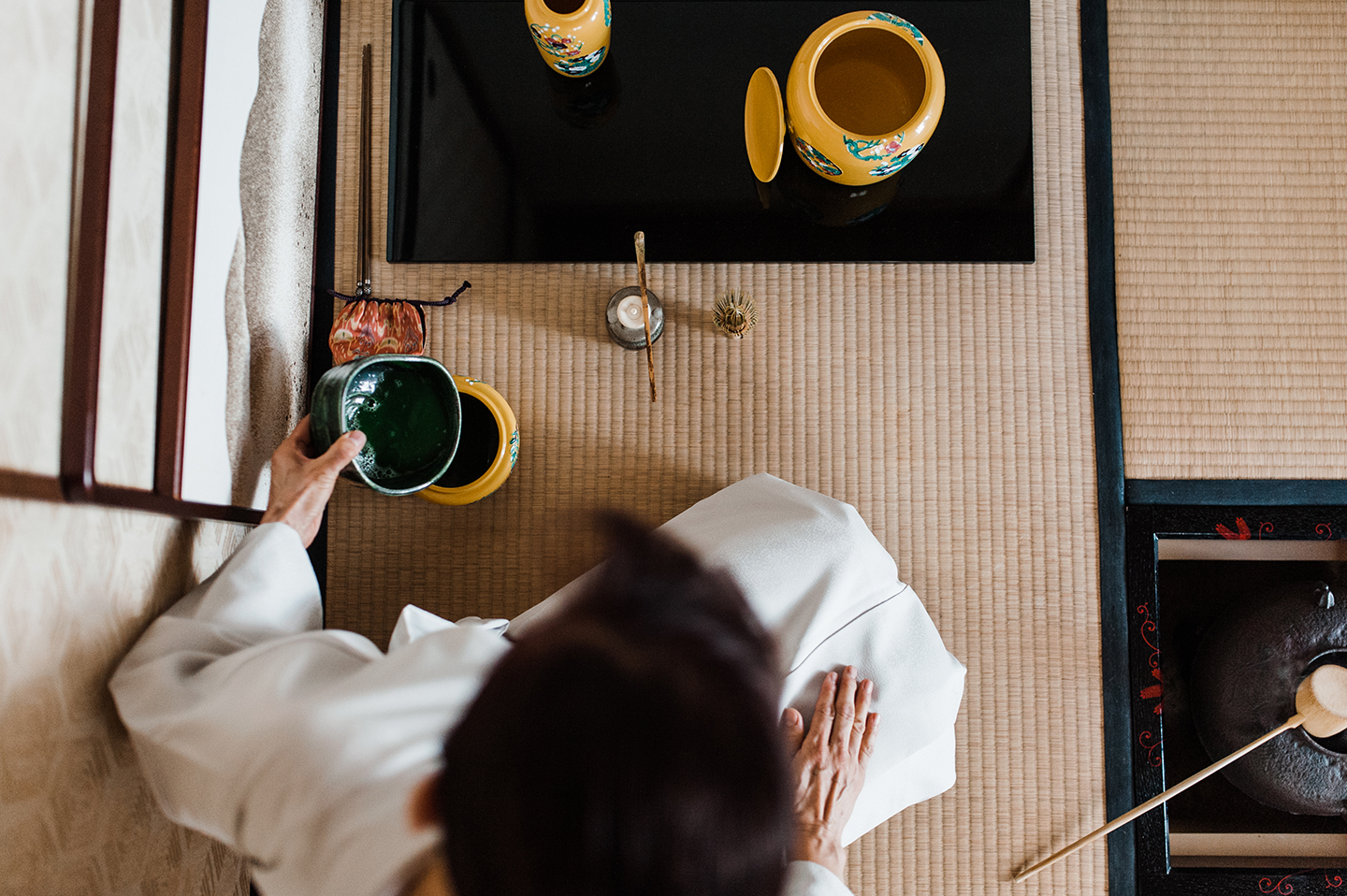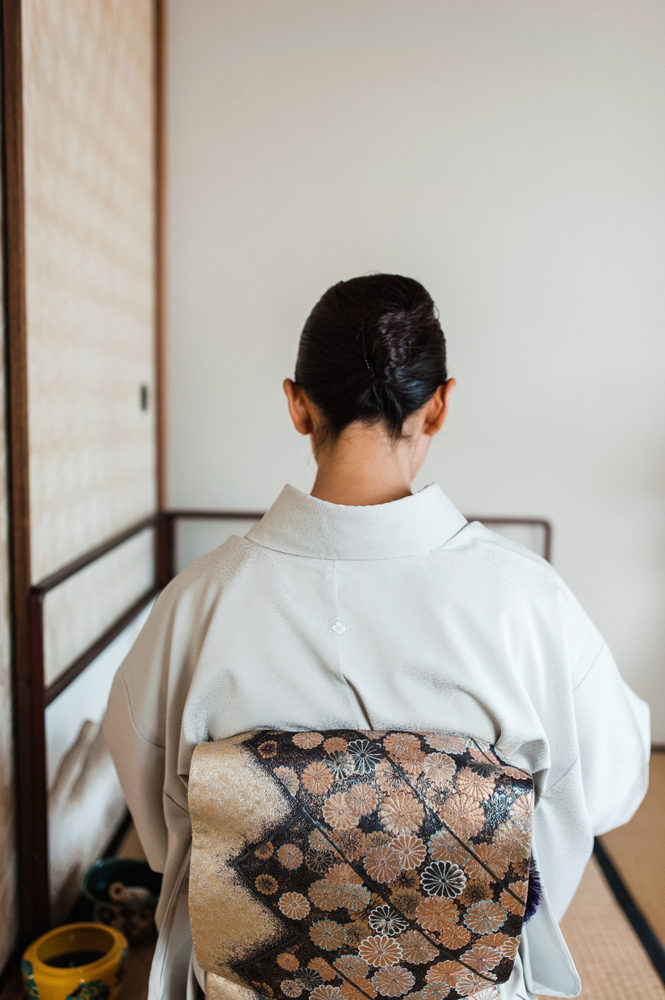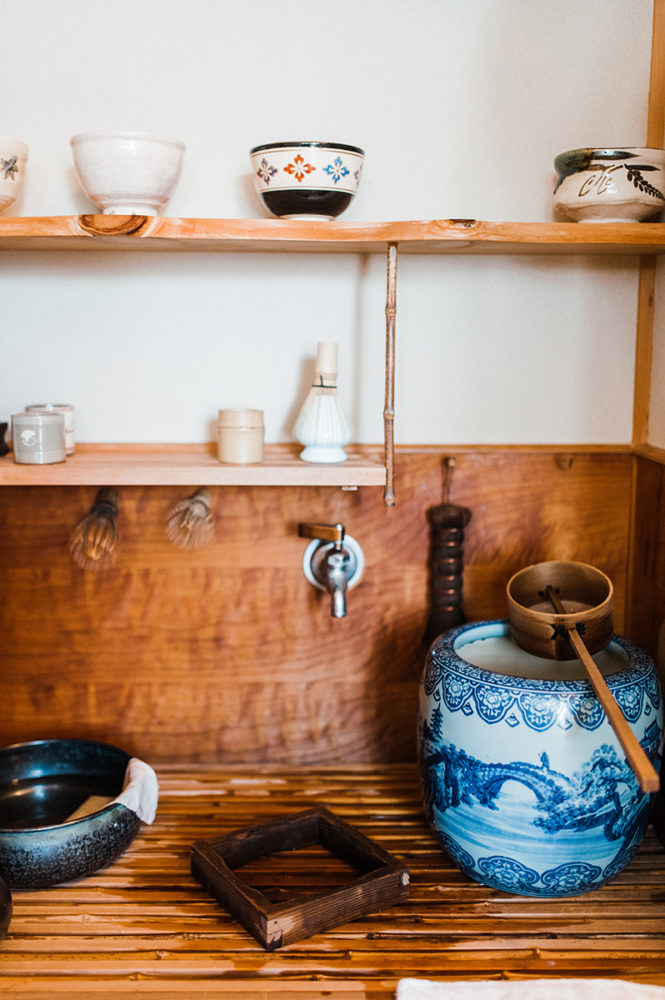A woman’s journey into the life-changing world of Japanese chado.
Tucked into a quiet hilltop neighborhood in Honolulu, Yumiko Sayama’s tea house is a study in grace and purpose. Birds warble their sweet notes from the trees as the morning’s sunlight filters in through the house’s translucent shoji screens. Inside, clean lines and muted colors soothe an overactive mind.
Beauty is found in the small, unadorned details: neutral walls edged with simple wood trim, a vessel holding water, a single scroll. Even the breeze, winding its way through the ironwood tree forest adjacent to Sayama’s home, seeks brief respite before traveling on to the city below. Everything quiets in the tea house.
Sayama is a teacher—or a “lifelong student,” she demurs—of the art of chado, or “the way of tea.” Clad in kimono, she prepares for the morning’s tea ceremony with movements both silent and sublime. Believed to have originated in the late 12th century, when a Japanese monk returned from China with new knowledge of tea preparation, the tencha tea ceremony has evolved into an elegant art that embodies the quiet contemplation of Zen Buddhism through grace, harmony, and humility.
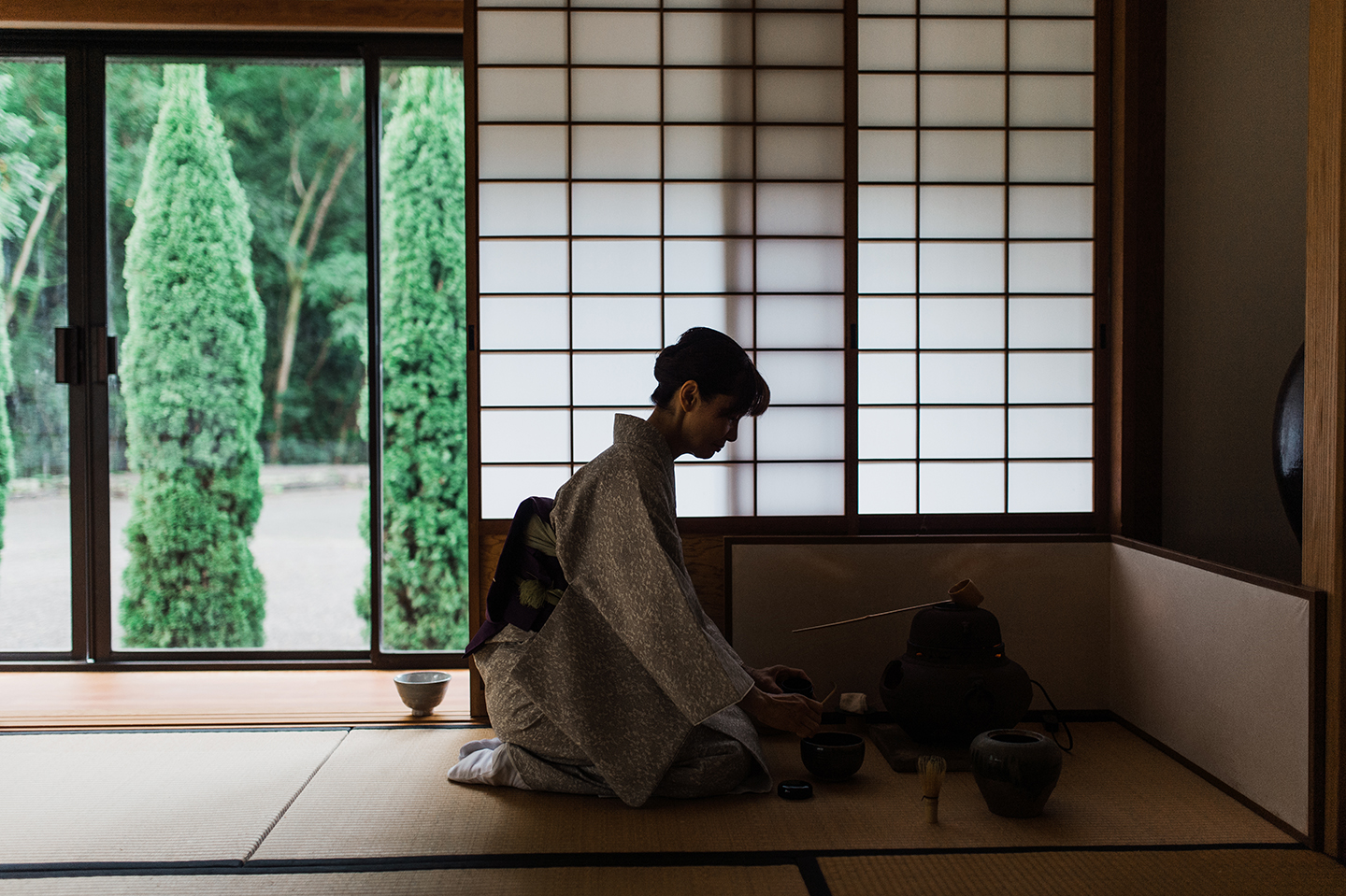
Sayama arranges cylindrical pieces of charcoal in a hearth, their embers glowing in the silky ash. She prepares the implements for the ceremony: palm-sized tea bowls, a slender, elongated ladle, an airy bamboo whisk—each item utilized with exquisite thought and care.
Seated upon pale-golden tatami mats, guests enjoy wagashi, or Japanese confections, while Sayama adds a small spoonful of moss-green powder into a bowl. She adds hot water and briskly whips the mixture. From the elegant crenellations of her kimono, she removes a red silk square to handle the tea bowl. The wagashi, having left a trace of sweetness on the tongue, balances out the bitter foaminess of the matcha tea that Sayama now presents to the guests.
Chado is beautiful to observe, explains Sayama, and not just for its refined prescribed motions or the simplistic beauty of its ceremonial implements.
“Tea is always about taking care of others,” she says.
Growing up in Asakusa, a Tokyo district known for retaining a historic Japanese atmosphere, a young Sayama took curious delight in seeing the townswomen eschewing modern, Western clothing in favor of traditional Japanese dress and hairstyles. She’d watch them mete graceful steps along neighborhood corridors. Donning a kimono as a child, she felt special, as if a “princess.”
Once in the fourth grade, she even styled her hair in the same delicate manner as the women she had admired in the streets. “I just felt comfortable,” Sayama says. Though Sayama appreciated the classic Japanese arts, studying Japanese dance late into her teens, chado held little appeal. In Sayama’s mind, tea ceremonies seemed too rigid and regulated. Seiza, the formal, upright style of sitting found in tea ceremonies, seemed a dreadful requirement.
By the time she was 31 years old, Sayama resided on O‘ahu, where she was acclimating to tropical life in the Pacific. In quiet moments, she found herself missing her home culture. Longing to reconnect, she telephoned a local Hongwanji: Were there any classes available, perhaps ikebana or Japanese dance? The woman on the line was obliging, the call serendipitous. Indeed, a tea class was scheduled for that very morning.
At the class, unlike the formal, constricted tea room she had imagined in her youth, Sayama instead discovered a warm, cheery salon of women. The group chatted about soap operas and new restaurants while simultaneously learning about tea ceremony protocol. Though the tone leaned more casual than ceremonial, Sayama found the practice pleasing and began regularly attending the gatherings.
Tea is always about taking care of others.
Yumiko Sayama
Ten years later, Sayama’s teacher, who had been quietly observing Sayama’s inclination toward chado, encouraged her to visit Kyoto—considered the hub of Japanese tea culture—to further her tea studies. There, Sayama experienced a world strikingly more formal than her relaxed Honolulu-based classes.
“It was so hard,” says Sayama, noting that many of the workshop participants had been practicing chado for more than 30 years. “I was a beginner, like a chick!”
When Sayama began to struggle, and her prejudices of tea’s rigid culture surfaced anew, the teacher gently demonstrated to her that chado was not meant to be constrictive.
“You don’t have to do it,” Sayama was told. “There is no ‘have to.’” Suddenly she understood: Chado wasn’t about rules; it was about finding rapture through meditative action.
“It was like opening a treasure box,” Sayama says of the awakening. “Once you understand the basics, it’s freeing. I felt reborn.”
Between her visits to Kyoto and her continued study in Honolulu, Sayama’s connection to chado deepened. Then, 25 years into her tea journey, Sayama was offered a most prestigious honor: a scholarship to study under a renowned tea master in Kyoto.
“It was sort of like boot camp,” Sayama says of the strict, yearlong study.
During it, she led a cloistered life. Sayama and the four other awardees were required to wear kimono every day. Scholarly endeavors and mundane work were prescribed in equal measure. Days began promptly at sunrise, with two hours dedicated to cleaning the grounds, including the bathrooms, kitchen, and gardens.
After a morning assembly, a full day of classes commenced, followed by dinner and more cleaning. Students finally retired to their sleeping quarters at 9 p.m. Nearly three years later, Sayama marvels at the experience, grateful for having furthered her knowledge in both breadth and depth, but more so, grateful for having what began as a recreational pleasure transcend to something more spiritual.
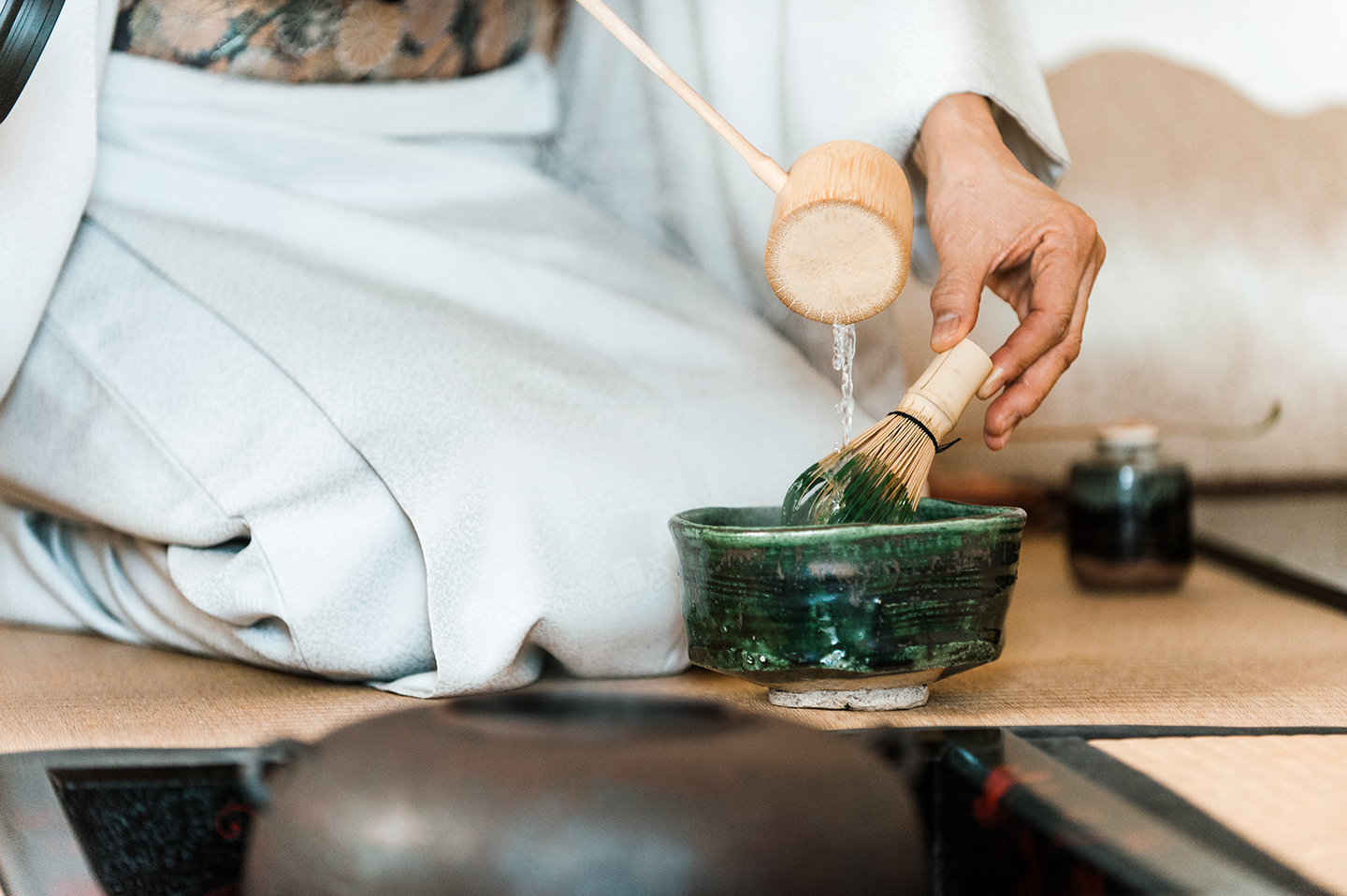
Sayama sometimes fears that technology has dulled our senses. Fortunately, in a teahouse, the high-tech world outside is absent. Guests are invited to slow down and experience the world around them. While in Japan, where the four distinct seasons—winter, spring, summer, and fall—heavily tie into tea ceremonies, Sayama has instead discovered ways to highlight Hawai‘i’s own unique patterns in nature.
“I try to show [my guests] how we can feel seasons in other ways,” she says. “For example, see how the moon is so bright right now, or how the shower trees bloom.
In Sayama’s teahouse, guests can refresh and reset. Then they bow in appreciation to their hostess, and the shoji screens are opened anew. The tea ceremony is now complete. Outside, the sun shines in a wide blue sky. The guests inhale a final, restorative breath before departing.
“This is a lifelong study,” says the Honolulu tea teacher, reflecting upon chado’s impact on her spirit, outlook, and direction in life.
Through chado, she found passion. Through passion, she found purpose. And, through purpose, Yumiko Sayama found her way.

